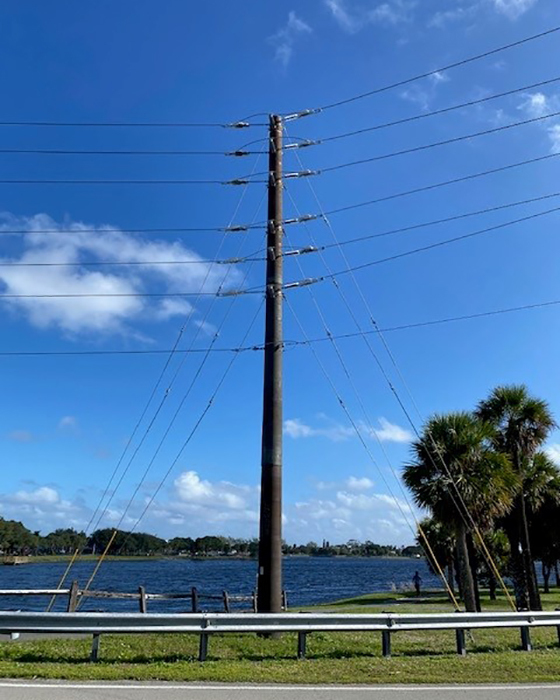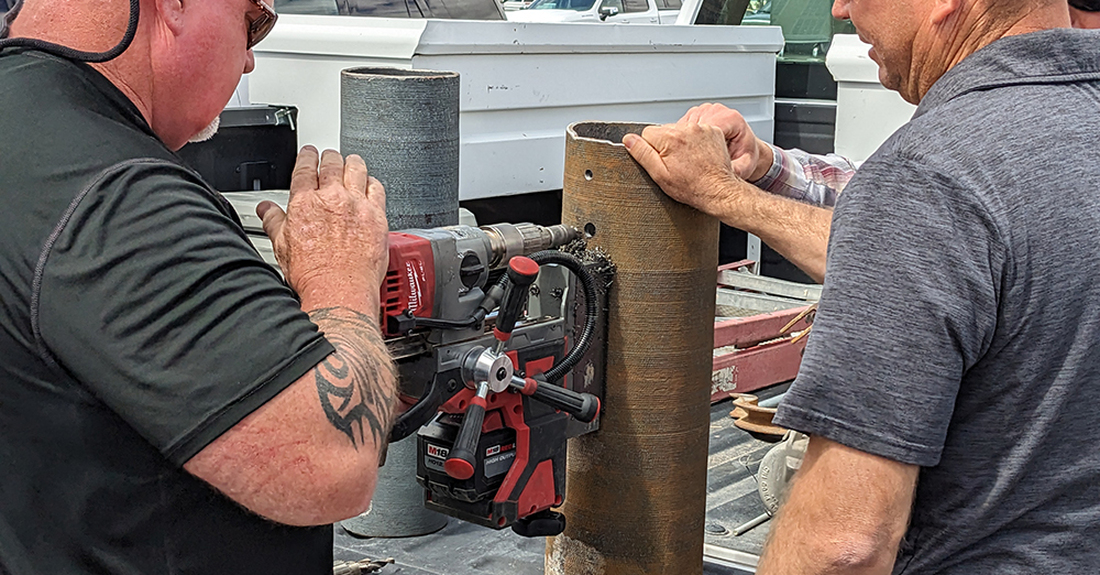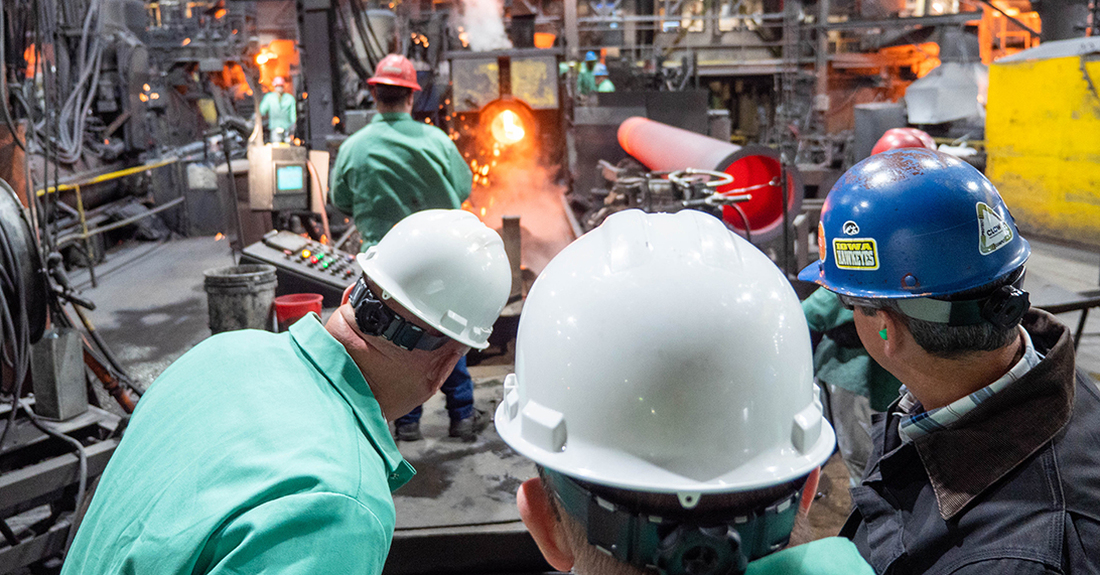“We are stewards of the environment. Our responsibility goes beyond producing products of superior quality and earning profits. We are strongly committed to protecting our planet. When we protect our planet, we protect our team members and the common good of our communities. The McWane Way protects the environment for generations. We are good corporate citizens. We are good neighbors in the communities where we live and work.”

Sustainability 101
Sustainability refers to the capacity of a system or process to endure over time without compromising the well-being of future generations or the natural environment. Or, more simply, it’s about meeting the needs of the present without jeopardizing the ability of future generations to meet their own needs.
There are three main pillars of sustainability:
Environmental Sustainability: This aspect focuses on preserving and protecting the natural environment, including ecosystems, biodiversity, air, water, and land resources. It involves practices that minimize pollution, reduce waste, promote conservation, and support renewable resources.
Social Sustainability: This pillar centers on the well-being and quality of life of people within a community or society. It encompasses social justice, equity, human rights, health, education, access to basic needs, and inclusivity.
Economic Sustainability: Economic sustainability involves maintaining a healthy and stable economy that supports the needs of society without depleting natural resources or causing significant negative impacts. It emphasizes long-term economic viability and considers the true costs of production, including social and environmental factors.
While environmental sustainability is a core part of our mission, we also want to promote social sustainability and economic sustainability. As we say, we aim to be “good corporate citizens and good neighbors in the communities where we live and work.”

Ductile iron is 100% recyclable
McWane Poles are made of over 96% recycled material, namely recycled iron and steel scrap, and are 100% recyclable. Iron pipe, even over 100 years old, can be melted down and recast into new ductile iron pipe. Steel wheels, old house radiators, engine blocks, cars, refrigerators, washers and dryers, structural steel—we recycle all of it into new McWane ductile iron that will last for generations.
In addition, pumping through ductile iron pipe results in as much as a 38% savings in energy consumption. Every ductile iron pole also saves two to three trees from being cut down, and because ductile iron lasts more than twice as long as wood poles, they don’t need to be replaced as frequently, saving even more trees throughout its lifecycle.
Other pole materials cannot claim to be made of recycled materials, and many cannot be made of recycled materials even if they wanted to. Their performance degrades with time and temperature, two factors on which recycling often depends. This is especially true with plastics, which requires virgin raw materials.
Creating a highly sustainable product
Ductile iron also reduces carbon emissions. They weigh less than wood poles and are much lighter than concrete. Because of this, they do not require as much energy and fuel to transport and reduce carbon emissions as well as lower transportation costs.
While wood poles may seem like a natural, sustainable solution, in some cases, they can also be harmful to the environment. Wood poles are sometimes treated with pentachlorophenol, which can potentially leach into the ground water and affect public safety.
Pentachlorophenol is a manufactured chemical and restricted-used pesticide. It is toxic by inhalation, ingestion and skin absorption. In soil, surface water and air, pentachlorophenol is broken down by microorganisms and sunlight into other compounds, some of which may be harmful to humans. The compound can be present in fish or other species used for food, as demonstrated by the ongoing food monitoring program of the Food and Drug Administration (FDA). The physical and chemical properties of the compound suggest that not much will evaporate into the atmosphere and that most of it will move with water and generally stick to soil particles.
Unlike pentachlorophenol, ductile iron is impermeable to organic contaminants, protecting clean water from environmental spills and the environment from contaminants in wastewater. McWane’s ceramic-epoxy embedment coating is certified by the National Sanitation Foundation (NSF) to be safe for use in contact with potable water sources.
A sustainable manufacturing process
A sustainable manufacturing process is a production approach that considers the environmental, social, and economic impacts of the entire manufacturing lifecycle. It goes beyond just complying with regulations and actively seeks to minimize its ecological footprint, promote worker safety, and contribute positively to the surrounding communities.
At McWane, our Environmental, Health, and Safety (EHS) management system allows us to manufacture our products in an environmentally compliant and eco-friendly way and provide communities with a foundation for life with clean, safe, and dependable drinking water.
How utilities can better support sustainability
According to the EPA, 25% of greenhouse gas emissions in the U.S. come from electricity generation. That’s a significant amount, but utilities are already taking steps to improve their sustainability, thanks in large part to three factors:
Increasing regulations: The utilities sector is facing expanding government regulations, exemplified by the US Federal Clean Air Act and comparable laws in other regions. These regulations mandate the industry to lower carbon emissions and achieve sustainability objectives.
Growing demand: Both environmentally conscious consumers and shareholders, including major institutional investors, are exerting significant pressure on utility companies. They demand a strong focus on sustainable practices and the adoption of renewable energy sources, such as wind and solar power.
Decreasing costs: The costs associated with generating renewable energy are steadily declining as the renewable technology market continues to expand. This trend makes it increasingly attractive for utilities to invest in and utilize sustainable energy sources.
James McClelland, Global Marketing Director at SAP Utilities & Energy Industry, points to five actions utilities companies can take to deliver a sustainable supply chain:
- Create a long-term strategy that considers sustainability in every process from start to finish.
- Source materials ethically and ensure labor standards and fair humanitarian practices are in place throughout the supply chain.
- Implement sustainable design and engineering practices.
- Use logistics processes that optimize loads to reduce emissions and carbon footprint.
Operate assets and equipment in an energy-efficient manner that is safe for the environment and the workforce.

Meeting the demand of eco-conscious consumers
Customers are displaying a newly heightened environmental consciousness, as electric vehicles, self-generated energy sources, and climate change dominate the headlines and national conversation. This increased awareness is leading consumers to demand more from their utility providers. They are calling for the introduction of innovative initiatives and processes that more sustainable.
A study from Escalent surveyed the customers of 140 of the largest utility companies and found:
- 1 in 5 wants an environmentally friendly rate plan, such as net metering, green energy, or EV
- 1 in 3 says their utility should have a role in EV charging deployment
- Over half are interested in solar energy powering their home
- Customers rank clean environment as the second most important cause utilities should support, following low-income family support.
- 2 in 3 want their utility to invest in new technology to reduce climate impact
Customers want action on sustainability, yet only 19% of them are aware of what their utilities are doing on that front. Silverblaze recommends four ways that utilities can improve their sustainability in ways that consumers will recognize:
Reduce paper communication: Customers don’t just want to be more eco-friendly themselves, they also want the companies they do business with to be part of that philosophy and lifestyle. That’s why we will see many more utilities focus on digital transformation, moving away from the traditional paper communication models of the past and embracing digital engagement instead. Utilities will use customer portals (if they aren’t already) to engage with their customers online, reduce paper consumption and significantly enhance the overall customer experience.
Help your customers reduce their energy usage: Many utility customers today want to actively reduce their energy usage, both for cost and environmental reasons. Progressive utilities will start positioning themselves as an energy partner, and not just a provider. To do this, utilities will have to introduce new methods of customer engagement and education around energy usage. A customer portal implementation will allow utilities to send easy-to-read usage and analytics data that give the customer valuable insights into how much energy they are using.
Broaden utility service offerings: As we move forward into a more energy conscious new world, we expect to see utility providers start to provide new service offerings aimed at homeowners, small businesses, and commercial customers. Utilities will expand what they traditionally consider a utility service. One of the most talked about subjects in recent years, and what we expect to see many electric utilities transition to, is electric vehicle charging stations. This is just one example of the many environmentally conscious service offerings that utility providers will consider for their customer base.
Provide smart metering and real-time analytics: The traditional energy utility reads meters manually and uploads data to the database before sending usage data to the consumer. This is time-consuming and doesn’t provide either the utility or the customer with immediate real-time information.

